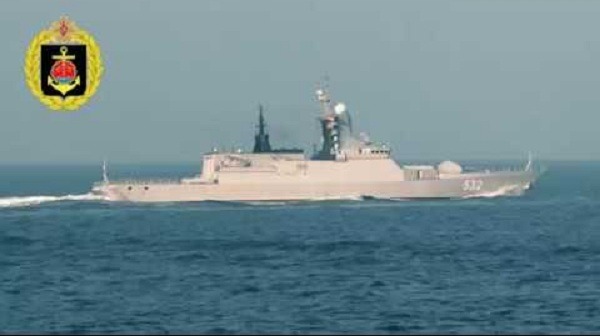Steregushchiy-class corvette (Project 20380) corvettes of the Baltic Fleet, the Soobrazitelny and the Boiky, and the Kola tanker finished a three-month ocean voyage and returned to the Baltiisk port. The corvettes and tanker, who have carried out planned tasks in the areas of the North Atlantic, in the Mediterranean Sea and in the Indian Ocean, they covered 35,000 nautical miles.
The Boiky, Soobrazitelny corvettes and the Kola tanker left Baltiisk on October 14 for a long-range sortie in the framework of regular Russian naval presence in the World Ocean. They accomplished dozens of training missions, air and submarine defense drills. During the voyage, the Russian ships made business calls at Limassol (Cyprus), Djibouti (the Republic of Djibouti) and Tartus (Syria).
The Steregushchiy class ( “vigilant”) is the newest class of corvette in the Russian Navy. It was designed by the Almaz Central Marine Design bureau. The first ship was designated Project 2038.0 (or 20380) by the Russian Government; subsequent vessels were built to an improved design, Project 20381. At 2,200 tons it is large for a corvette and is designated as a frigate by NATO. Project 20382 “Tigr” is an export variant that has been ordered by Algeria. The Steregushchiy class has been further developed into the Project 20385 Gremyashchiy-class corvette and Project 20386 Derzky-class corvette.
The Steregushchiy-class corvettes have a steel hull and composite material superstructure, with a bulbous bow and nine watertight subdivisions. They have a combined bridge and command centre, and space and weight provision for eight SS-N-25 missiles. Stealth technology was widely used during construction of the ships, as well as 21 patents and 14 new computer programs. Newest physical field reduction[clarification needed] solutions were applied too. As a result, designers considerably reduced the ship’s radar signature thanks to hull architecture and fire-resistant radar-absorbent fiberglass applied in tophamper’s design.
The Kashtan CIWS on the first ship was replaced in subsequent vessels by 12 Redut VLS cells containing 9M96E medium-range SAMs of the S-400 system. SS-N-27 (Kalibr type missiles) will be fitted to a larger domestic version, Project 20385.
The export version known as Project 20382 Tigr carries either eight supersonic SS-N-26 (P-800 Oniks) anti-ship missiles or sixteen subsonic SS-N-25 ‘Switchblade’ (Kh-35E Uran). It also carries two twin-tube launchers for 533mm heavy torpedoes. The A-190E 100mm gun first used in the Talwar-class frigates is controlled by a 5P-10E system that can track four targets simultaneously. Protection from air attacks is provided by the Kashtan CIWS and eight mounts for the SA-N-10 ‘Grouse’ (9K38 Igla) SAM.















